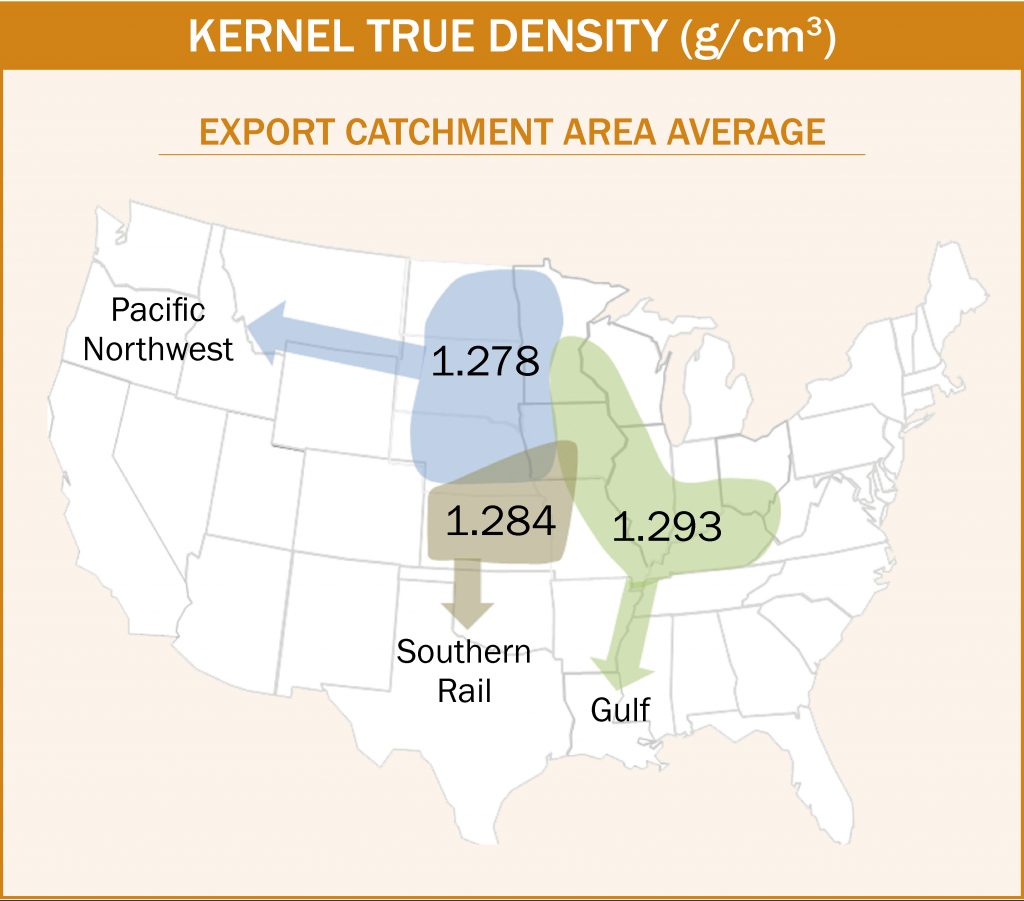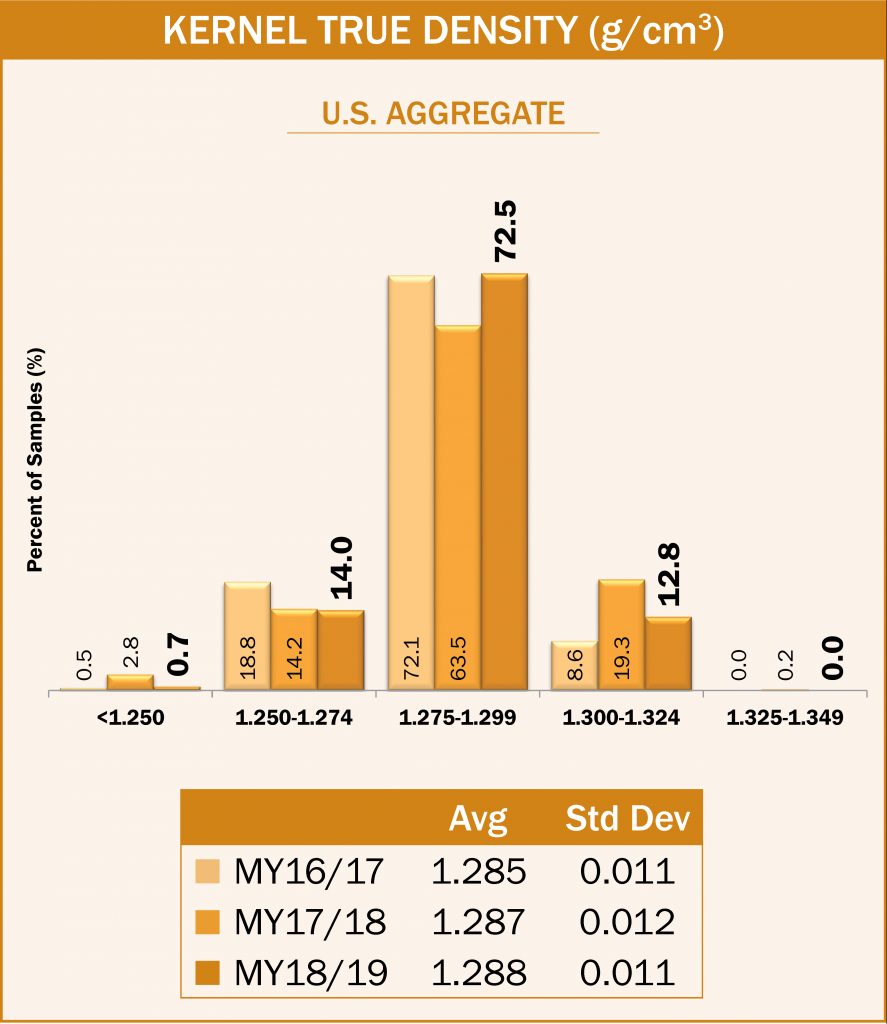Kernel True Density
Kernel true density is calculated as the weight of a 100-kernel sample divided by the volume, or displacement, of those 100 kernels and is reported as grams per cubic centimeter (g/cm3). True density is a relative indicator of kernel hardness, which is useful for alkaline processors and dry millers. True density may be affected by the genetics of the corn hybrid and the growing environment. Corn with higher density is typically less susceptible to breakage in handling than lower density corn, but is also more at risk for the development of stress cracks if high-temperature drying is employed. True densities above 1.30 g/cm3 indicate very hard corn, which is typically desirable for dry milling and alkaline processing. True densities near the 1.275 g/cm3 level and below tend to be softer, but process well for wet milling and feed use.

Results
- Average U.S. Aggregate kernel true density (1.288 g/cm3) was slightly higher than 2017/2018 (1.287 g/cm3), 2016/2017 (1.285 g/m3) and the 5YA (1.286 g/cm3).
- Average kernel true density for the 2018/2019 export samples was higher than for the 2018 harvest samples (1.265 g/cm3). The export 5YA true density (1.286 g/cm3) was also higher than the harvest 5YA true density (1.258 g/cm3). Average true densities have been 0.021 to 0.036 g/cm3 higher at export than at harvest over the past eight years.

- The 2018/2019 export samples had a range of 1.235 to 1.325 g/cm3 (with a standard deviation of 0.011 g/cm3), while the 2018 harvest samples had a wider range (1.167 to 1.374 g/cm3) and a larger standard deviation (0.018 g/cm3).
- For the 2018/2019 export samples, 85.3% had kernel true densities equal to or above 1.275 g/cm3, compared with 83.0% in 2017/2018 and 80.7% in 2016/2017. This indicates that the distribution of true densities found in the 2018/2019 samples was similar to the distributions from the past three years. Interestingly, average bulk density or test weight also remained constant at 57.4 lb/bu over the past three years and the 5YA.
- Average kernel true densities for the Gulf, Pacific Northwest and Southern Rail ECAs were 1.293 g/cm3, 1.278 g/cm3 and 1.284 g/cm3, respectively. No consistent pattern in true densities among ECAs has been observed across the years.
- Average kernel true density for contracts loaded as U.S. No. 2 or better (1.287 g/cm3) was the same as for contracts loaded as U.S. No. 3 or better.
